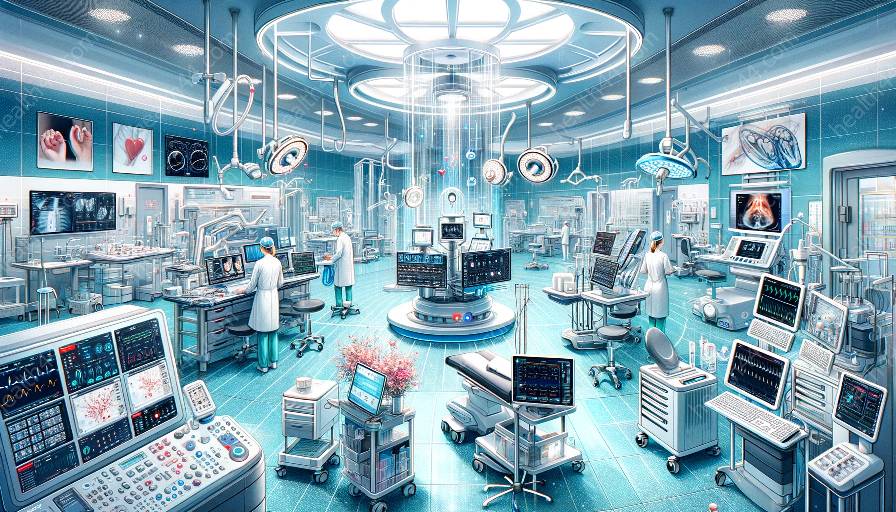Biomedical instrumentation is an essential component of modern healthcare, enabling the monitoring and diagnosis of medical conditions. A crucial aspect of biomedical instrumentation is the role of signal processing in enhancing the functionality and effectiveness of medical devices. Signal processing techniques, such as filtering, amplification, and analysis, play a vital role in improving the quality and reliability of data obtained from various biomedical devices. This article aims to explore the significance of signal processing in biomedical instrumentation for medical devices, highlighting its impact on healthcare technology.
The Importance of Biomedical Instrumentation in Healthcare
Biomedical instrumentation encompasses a wide range of devices and systems used in healthcare settings to monitor and diagnose medical conditions. These devices include electrocardiography (ECG) machines, blood glucose monitors, ultrasound machines, and many others. The data collected by these instruments are vital for healthcare professionals to make accurate diagnoses, monitor patient vital signs, and evaluate treatment effectiveness. The accuracy and reliability of this data are critical for delivering high-quality healthcare.
One of the key challenges in biomedical instrumentation is managing and interpreting the signals obtained from the human body. These signals are often weak and susceptible to noise, requiring sophisticated signal processing techniques to enhance their quality and extract meaningful information. Signal processing plays a pivotal role in addressing these challenges, thereby improving the performance and accuracy of medical devices.
Signal Processing Techniques in Biomedical Instrumentation
Signal processing involves various techniques designed to manipulate and interpret signals obtained from biomedical devices. These techniques serve to improve the quality, accuracy, and reliability of the data. Some of the fundamental signal processing techniques utilized in biomedical instrumentation include:
- Filtering: Filtering techniques are used to remove unwanted noise and artifacts from the acquired signals, thereby enhancing the signal-to-noise ratio and improving the accuracy of measurements. In ECG machines, for example, filtering is essential for isolating the cardiac electrical activity from other interference.
- Amplification: Amplification techniques are employed to increase the strength of weak signals, ensuring that they can be accurately measured and analyzed. Devices such as EEG (electroencephalography) machines rely on amplification to detect and record the brain's electrical activity.
- Feature Extraction: Signal processing enables the extraction of specific features or characteristics from biomedical signals, which are essential for diagnostic purposes. For instance, in medical imaging devices, feature extraction techniques help identify abnormalities in tissues or organs.
- Pattern Recognition: Pattern recognition techniques are utilized to identify patterns and anomalies within biomedical signals, aiding in the early detection of medical conditions. These techniques are particularly valuable in systems that monitor physiological parameters, such as pulse oximeters.
These signal processing techniques play a critical role in ensuring the accuracy and reliability of biomedical data, ultimately contributing to improved patient care and clinical outcomes. By leveraging these techniques, medical devices can provide healthcare professionals with valuable insights into a patient's health status, leading to more informed decision-making and personalized treatment plans.
Impact of Signal Processing on Healthcare Technology
The application of signal processing in biomedical instrumentation has significant implications for healthcare technology. By enhancing the performance of medical devices and improving the quality of data, signal processing contributes to the following key areas:
- Early Diagnosis: Signal processing techniques aid in the early detection of physiological abnormalities and medical conditions by effectively analyzing and interpreting signals. This early diagnosis is crucial for timely intervention and improved patient outcomes.
- Remote Monitoring: Advanced signal processing enables the development of remote monitoring systems, allowing healthcare providers to access and analyze patient data in real-time from a distance. This capability is particularly valuable for managing chronic conditions and ensuring continuous care.
- Personalized Medicine: Signal processing facilitates the customization of medical treatment based on individual patient data, leading to personalized medicine approaches that optimize therapeutic outcomes and minimize adverse effects.
- Integration with AI and Machine Learning: Signal processing techniques form the foundation for AI and machine learning applications in healthcare, enabling the development of intelligent diagnostic tools and predictive algorithms.
Furthermore, the continuous advancements in signal processing technology contribute to the evolution of smart medical devices that are capable of real-time data analysis, adaptive functionality, and seamless integration with healthcare information systems.
Conclusion
In conclusion, signal processing plays a pivotal role in biomedical instrumentation for medical devices, significantly impacting the quality of healthcare technology. By harnessing various signal processing techniques, biomedical devices can deliver accurate and reliable data, enabling healthcare professionals to make informed clinical decisions and improve patient outcomes. As technology continues to advance, the ongoing integration of signal processing with biomedical instrumentation holds great promise for the future of healthcare, fostering innovation and enhanced patient care.


